Moving to a new house regardless of whether it’s down the street or across the country is stressful for anyone, but for dogs it can be especially confusing and upsetting. I just moved my three dogs (ages 16 years to 21 months, 10 pounds to 100 pounds) from New York City to Portland, Oregon. The move has been a bit hectic, but my biggest priority has been creating stability and consistency for my dogs.
In fact, my move was all about my dogs. My middle pup has severe thunder phobia; even with training and working closely with our veterinary team to prescribe psychiatric medication, she wasn’t able to cope with the erratic weather patterns of the North East. And then my young giant dog needs surgery on both her knees, which surgeons discouraged us from doing while we lived in a Brooklyn townhouse with steep stairs.
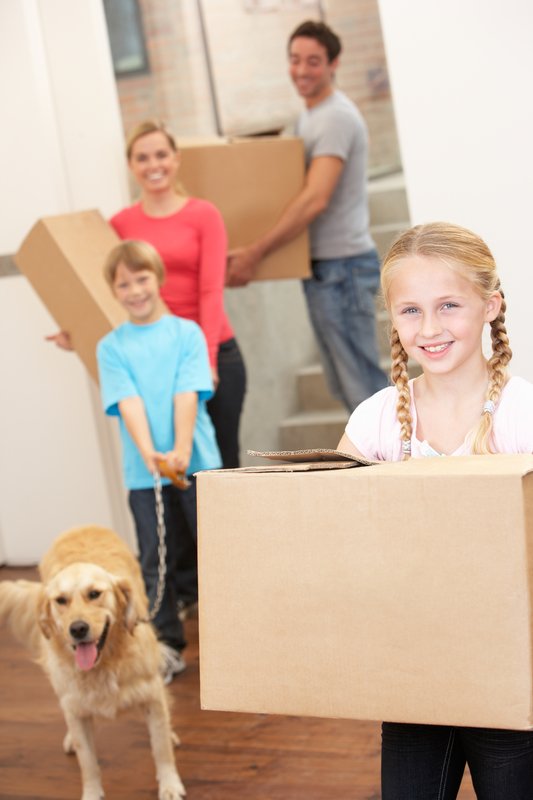
© Monkeybusinessimages | Dreamstime.com
So, my partner and I put our house up for sale and rented a one-level ranch-style house in Oregon, where thunder storms are rare. My move was all about meeting the individual needs of my dogs, but if you are planning to move with dogs for any reason, there are some important things to consider for the emotional and physical wellness of your dog during the transition.
How to Prepare Your Dogs for Moving to A New Home
Jordan Holliday, Brand Marketing Specialist with Embrace Pet Insurance, recommends, “Before you head to a new neighborhood, city, or state, be sure to have the contact information for the local emergency veterinary hospital on hand. If you’re going to need a new primary care vet, have one lined up and have your pet’s documents transferred to the new hospital in advance.”
Leaving our favorite family veterinarian was one of the hardest parts of making the decision to move cross country for us. Veterinarians often have connections to other doctors in different cities and states so if you like your vet, it’s worth asking them for a referral. Ours was able to find us a new primary care clinic and veterinary surgeon close to our new house.
As much as possible, prioritize keeping your dog’s routines consistent during the move. Holliday encourages movers with dogs to, “once in the new home, create a haven: Consider unpacking your pet’s comfort items first. Having his bowls, bed, and favorite treats or toys can be a solace in a strange, new place.” Crates and beds that are comforting and familiar for your dog are also good things to have available right away during a move – and even on the trip there.
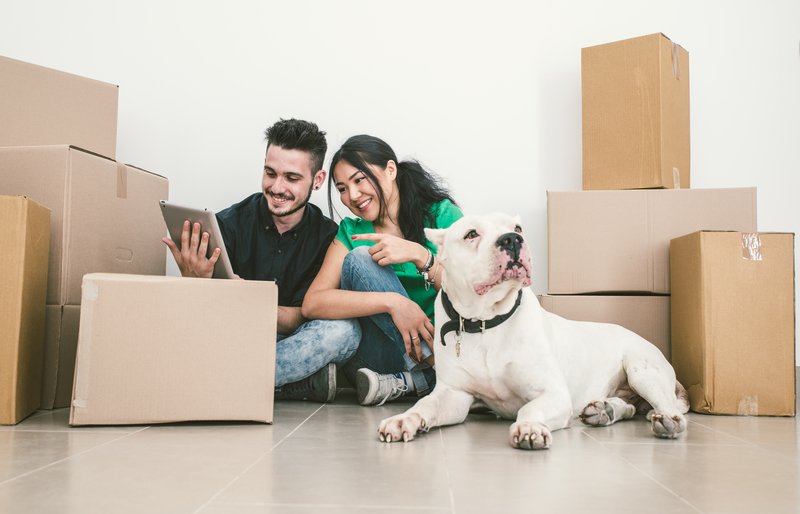
© Oneinchpunch | Dreamstime.com
Holliday also reminded dog parents to be sure to fill any prescriptions your dog has in advance of your move. If you are moving to a new area of the country you will also want to ask your vet how the new climate could impact concerns and preventatives for fleas, ticks, and heartworm prior to the move.
Useful Dog Training Skills for Adapting to New Environments
When moving, it can be helpful to remember that everything is new and different for your dog. Dogs can be situational learners, which means they might backslide a little bit on things like potty-training or crate training when in foreign spaces. In a new house or apartment, your dog might need more reassurance and a refresher on basic manners.
Grab some high value treats and make training a game! Working on some of your dog’s favorite tricks or practicing basic obedience skills could be a fun way of getting everyone used to the new house. This will be a good refresher for your dog, and a great way to unwind together during a stressful move.
Socializing Your Dog to New Neighbors, Noises and Other Environment Stuff
“Moving to a new home can be confusing and scary to a pet who doesn’t yet understand what’s about to happen. Secure your pet on moving day: Moving day can be quite traumatic for your pet. Many pets resort to door dashing to escape the craziness and can find themselves lost! All it takes is one mover or worker leaving a door open. It’s important to make sure your pet is wearing current identification at all times. As an added safety measure, it’s best to crate or kennel your pet in a quiet, familiar place, such as a bathroom,” says Jordan Holliday.
It’s likely that, big or small, your move is going to come with some environmental shifts for your dog: noisy neighbors, street traffic, etc. Be sure to take some training time to work with your dog on adjusting to the new home and neighborhood.
Having come from a huge city, my two big dogs are currently most enamored by “squirrel TV” out the large picture window in our living room. It looks out onto a small gravel road with lots of trees. Neither dog has ever lived somewhere with a window they could see out of, let alone one that features wildlife on the other side! So I’m spending a lot of time treating and rewarding quiet behavior and redirecting their focus toward toys and chews.
Checking for Dog Safety in Your New House, Yard and Community
As you are planning your move, be sure to confirm that the city (if you’re moving further away), or the neighborhood homeowner’s association doesn’t have any kind of dog or breed restrictions – especially if you are guardian of a breed commonly targeted for by discriminatory breed bans.
Also, if you are a multi-dog household, check that the local ordinances don’t place any limits on the number of pets (I recently learned that as dog friendly as Seattle is, they limit the number of pets someone can have of all species combined to three!)
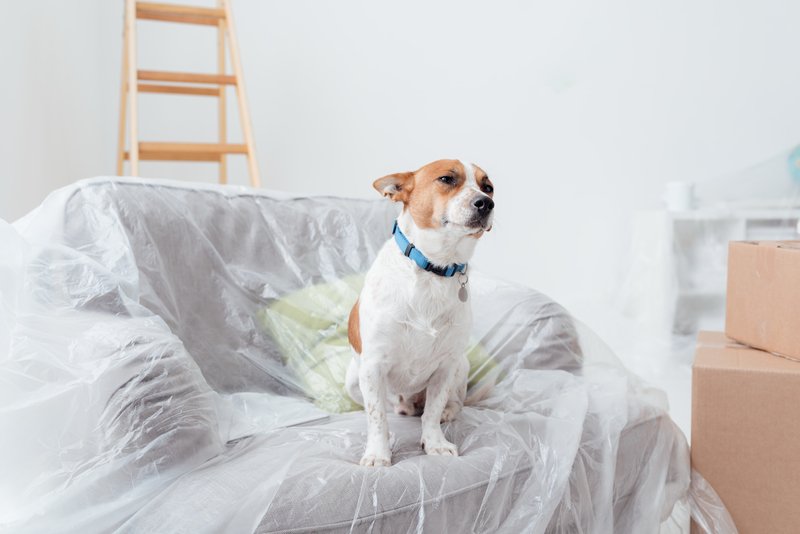
© Stokkete | Dreamstime.com
Once you arrive at your new house, you’ll want to double check everything is safe before letting your dog off leash to explore. This is especially true for the yard. Holliday encourages that dog guardians, “tour the property carefully to make sure there are no holes in fencing, loose boards, sharp objects, or other safety concerns.” I found a couple of areas in the fence line in our new backyard that I needed to patch/block. It’s also a good idea to bring your dog into the house and the yard on leash the first time walking them through your new home and showing them where familiar things like toys, beds and water bowls are.
Good luck with your move!
Sassafras Lowrey is an award-winning author and Certified Trick Dog Instructor. Sassafras lives and writes in Portland, Oregon, with her partner, a senior Chihuahua mix, a rescued Cattle Dog mix, Newfoundland puppy, two bossy cats, and a formerly semi-feral kitten.


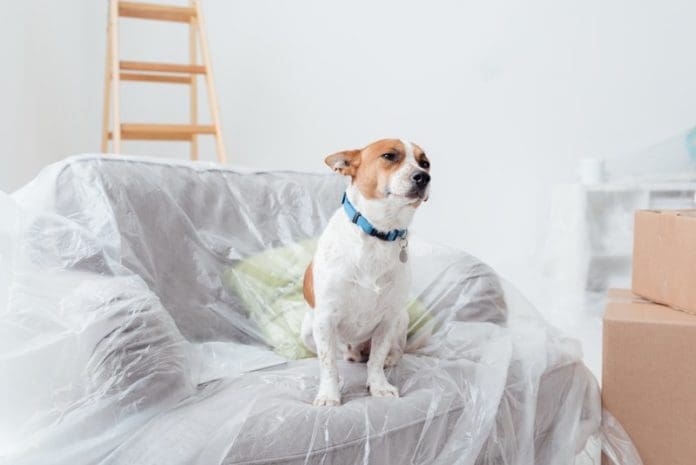
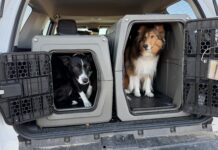



I buy a leash heand made is really nice.
Good article – we are moving next month with my bf and I worried about how my dog will react to a new house a lot.